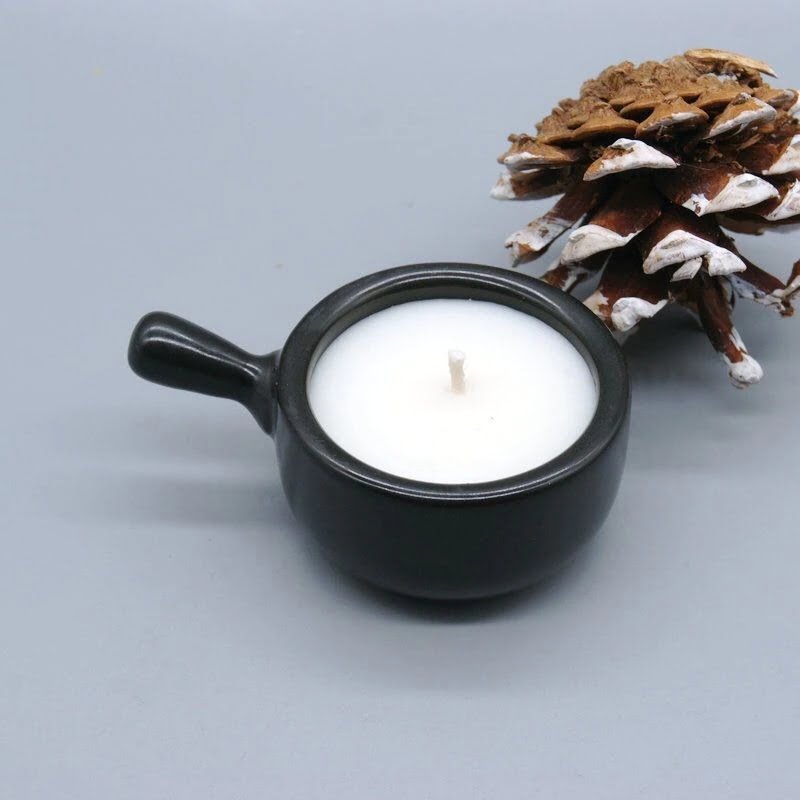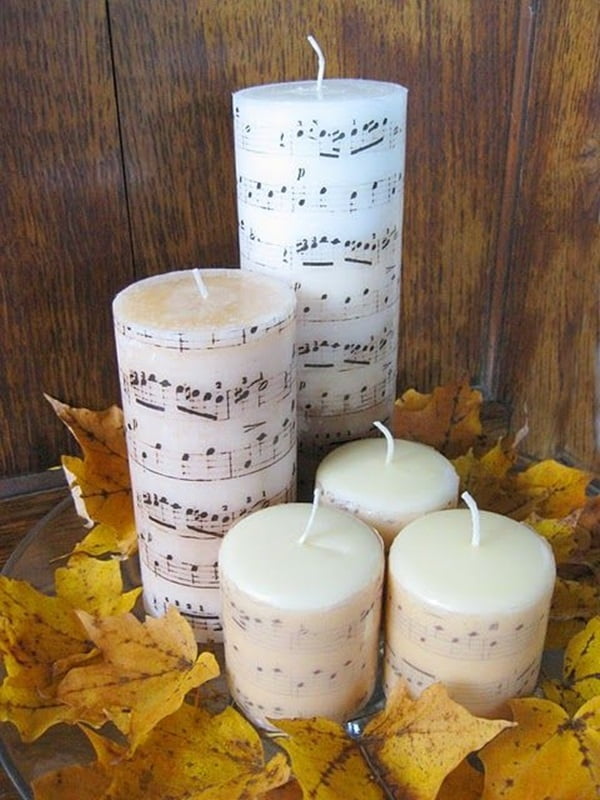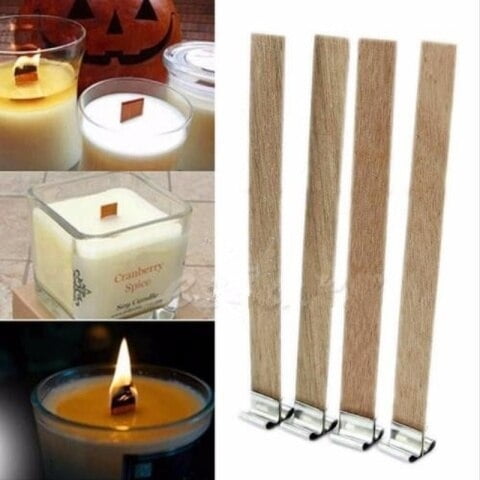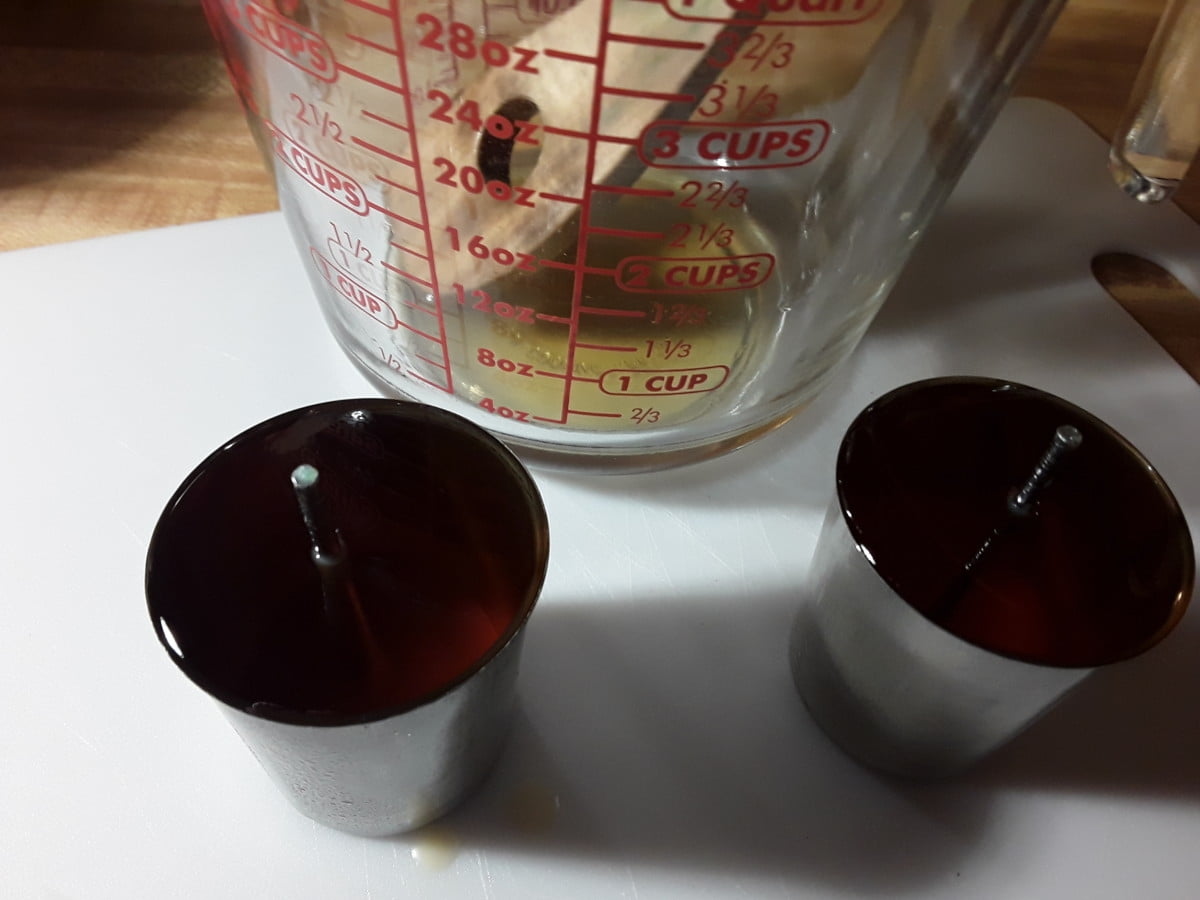Candle making is not only a creative and fulfilling hobby, but it also requires proper maintenance and cleanliness to ensure the highest quality of candles. One crucial aspect of candle making that often gets overlooked is washing the equipment used in the process. From molds to containers, cleaning candle making equipment is vital for maintaining hygiene, preventing contamination, and ensuring safe candle production.
To achieve clean and safe candle making equipment, it is important to understand the benefits of washing. Proper cleaning removes any residual wax from previous batches, preventing cross-contamination and maintaining the integrity of future candles. Additionally, regular washing helps prevent mold growth, eliminates any unpleasant odors, and extends the life of your equipment.
Before delving into the step-by-step guide on how to wash candle making equipment, you will need to gather essential tools to assemble your cleaning arsenal. These tools may include hot water, dish soap or specialized wax remover, soft-bristled brushes or sponges, and towels or paper towels for drying. Having these items at hand will make the cleaning process more efficient and effective.
In the upcoming sections of this article, we will discuss safety measures and precautions to take when prepping for cleaning as well as provide a detailed step-by-step guide on removing wax residue off molds and containers.
We will also delve into deep cleaning techniques for stubborn wax buildup, proper disinfection methods for maintaining hygiene, tips on storage and care to prolong equipment longevity, troubleshooting common issues that may arise during cleaning sessions, and finally embracing the joy that comes with freshly cleaned candle making equipment.
So let’s dig in and learn how to keep our candle making tools pristine.
Why Washing Candle Making Equipment is Crucial
Washing candle making equipment is not just a matter of cleanliness, it is a crucial step in ensuring the quality and safety of your candle making process. Properly cleaning and maintaining your equipment can yield numerous benefits that contribute to the overall success of your candle making endeavors.
Firstly, washing candle making equipment helps to prevent cross-contamination. When you reuse molds, containers, or other tools without cleaning them thoroughly, there is a risk of leftover residue from previous candles mixing with new materials. This can lead to undesirable effects such as off-putting smells, uneven burning, or discoloration of your candles. By washing your equipment after each use, you eliminate the possibility of any unwanted remnants interfering with the quality of your future creations.
Additionally, clean equipment makes for a more efficient candle-making process. Any remaining wax residue can impede the pouring or setting of new candles, causing delays or inconsistencies in their appearance and performance. A thorough cleaning routine ensures that your molds and containers are free from any obstructions that could hinder the smooth production of candles.
Moreover, regular and proper cleaning extends the lifespan of your equipment. Candle making tools are an investment, and by taking care of them through regular maintenance and cleaning, you ensure that they will last longer. For example, removing stubborn wax buildup not only improves the performance of molds but also helps to prevent damage such as cracking or warping over time.
| Benefits | Description |
|---|---|
| Preventing cross-contamination | Eliminates the risk of unwanted remnants interfering with new candles |
| Increasing efficiency | Smoother production process without obstructions or delays |
| Prolonging equipment lifespan | Prevents damage and extends the usability of valuable tools |
Gathering the Essential Tools
Now that you understand the importance of washing candle making equipment and are ready to embark on the cleaning process, it is crucial to gather the essential tools needed for an effective cleaning session. As with any task, having the right tools at hand can make all the difference in achieving a thorough and efficient clean.
Warm Water & Dish Soap
One of the most basic yet important tools for cleaning candle making equipment is warm water and dish soap. This simple combination is effective in breaking down wax residue and removing any lingering dirt or debris. Fill a sink or basin with warm water and add a few drops of mild dish soap to create a soapy solution.
Soft Cloths and Scrub Brushes
To physically remove wax buildup or stubborn stains, it is necessary to have soft cloths and scrub brushes in your cleaning arsenal. Soft cloths made of microfiber or cotton are gentle on the surfaces of molds or containers but still offer enough abrasiveness to remove unwanted residue. Additionally, plastic scrub brushes with soft bristles can be helpful for loosening and removing wax from hard-to-reach areas.
Paper Towels and Q-tips
Paper towels are ideal for wiping away excess water, soap, or wax from cleaned surfaces. They absorb moisture well and leave behind a streak-free finish. Q-tips, on the other hand, are beneficial for getting into small crevices or corners where larger cleaning tools cannot reach. These handy cotton swabs can help ensure that no residue is left behind.
Rubber Gloves
When working with warm water, soap, and potentially harsh cleaning agents, it is important to protect your hands by wearing rubber gloves. Rubber gloves provide insulation against hot water while safeguarding your skin from potential irritants present in cleaning solutions.
It is recommended to gather these essential tools before starting the cleaning process to ensure a smooth and organized experience. With these tools at hand, you will be well-equipped to tackle any wax residue or dirt that may be present on your candle making equipment.
Prepping for Cleaning
Before diving into the process of washing candle making equipment, it is crucial to take the necessary safety measures and precautions. Handling hot wax and cleaning chemicals requires caution to prevent accidents or injuries. By following these safety guidelines, you can ensure a smooth and secure cleaning experience.
Firstly, make sure you are wearing appropriate protective gear. This includes gloves, goggles, and an apron to protect your skin from potential burns or irritation. Additionally, it is advisable to wear long sleeves and closed-toe shoes to further minimize any risks.
When working with hot wax, always keep a fire extinguisher nearby in case of emergencies. Pay extra attention when melting and pouring the wax, as accidental spills can lead to burns or cause fires. Use a double boiler or a suitable melting device that prevents direct contact with flames or high heat sources.
Another essential precaution is ensuring good ventilation in your workspace. Wax fumes can be harmful if inhaled over an extended period, so it’s important to open windows or use exhaust fans to maintain proper air circulation. If possible, consider using a dedicated area specifically for candle making that allows for easy ventilation.
Furthermore, be cautious when handling sharp objects such as scrapers or knives used for removing wax residue. Always hold tools firmly and cut away from yourself to avoid accidents like cuts or punctures.
By adhering to these safety measures and taking necessary precautions before starting the cleaning process, you can create a safe environment while preparing your candle making equipment for washing.
Step-by-Step Guide
Cleaning wax residue off molds and containers is an essential step in maintaining clean and safe candle making equipment. Residue buildup can not only affect the quality of future candles but also pose safety hazards if left unaddressed. In this section, we will provide a step-by-step guide to effectively clean wax residue off molds and containers.
Step 1: Removing Excess Wax
Before cleaning your molds and containers, it’s crucial to remove any excess wax. Start by gently scraping off as much wax as possible using a plastic scraper or a butter knife. Be careful not to scratch or damage the surface of the mold or container.
Step 2: Heating and Wiping
Next, heat the mold or container to melt the remaining wax residue. You can do this by placing them in hot water or using a hairdryer on low heat. Once the wax has softened, use a soft cloth or paper towel to wipe away the melted wax. It’s important to avoid using abrasive materials that can scratch or damage your equipment.
Step 3: Removing Stubborn Residue
In some cases, stubborn residue may still be present after Step 2. To tackle this, create a mixture of hot water and dish soap in a sink or basin. Soak the mold or container for about 15-20 minutes to loosen any remaining residue. Then, scrub gently with a sponge or brush specifically designated for cleaning candle making equipment. Rinse thoroughly with warm water to remove all traces of soap.
Following these steps will help you effectively clean wax residue off your molds and containers, ensuring they are ready for future candle making projects. Remember to always dry your equipment thoroughly before storing them to prevent any moisture-related issues and maintain their longevity.
Deep Cleaning Techniques
When it comes to candle making equipment, it’s common to encounter stubborn candle wax buildup over time. This can include residue on molds, containers, and even tools like thermometers or stirring utensils. To ensure the longevity and efficiency of your equipment, it’s important to incorporate deep cleaning techniques regularly. Here are some effective methods to remove stubborn candle wax buildup:
- Heat Method: One of the easiest ways to remove stubborn wax buildup is by using heat. Begin by warming up the affected area with a hairdryer or heat gun on low heat setting. Once the wax becomes soft and pliable, gently scrape it off using a plastic scraper or an old credit card. Be careful not to use anything sharp as it may scratch or damage the surface.
- Solvent Method: For more resilient wax buildup, using solvents can be highly effective. Start by applying rubbing alcohol onto a clean cloth or paper towel. Gently rub the affected area in circular motions until the wax starts to dissolve and transfer onto the cloth. Alternatively, you can also use acetone or nail polish remover containing acetone for this method.
- Freezing Method: For small items like thermometers or stirring utensils that are covered in hardened wax, freezing can be an effective technique. Place the item in a sealable plastic bag and put it in the freezer overnight. The extreme cold will cause the wax to contract and become brittle, making it easier to chip away with a dull knife or your fingers.
Remember to always test these cleaning methods on a small inconspicuous area first before applying them to larger surfaces or delicate equipment.
By incorporating these deep cleaning techniques into your regular maintenance routine, you can effectively remove stubborn candle wax buildup from your equipment and ensure its optimal performance for future candle-making endeavors.
Ensuring Hygiene
Properly disinfecting your candle making equipment is crucial in ensuring hygiene and maintaining a clean workspace. This step is especially important if you are sharing your equipment with others or if you plan to sell your candles to the public. Disinfecting not only eliminates any potential germs or bacteria, but it also helps prevent cross-contamination between batches of candles.
To ensure that your equipment is properly disinfected, there are several tools and techniques you can use. First and foremost, it is important to have access to a strong disinfectant solution. You can either purchase a commercial disinfectant specifically made for candle making equipment, or you can create your own by diluting bleach with water. A 10% bleach solution is generally recommended for disinfection purposes.
When using the disinfectant solution, it is important to follow proper safety precautions. Wear gloves and protective eyewear, as some disinfectants can be harmful if they come into contact with your skin or eyes. Additionally, make sure to work in a well-ventilated area to avoid inhaling any fumes from the cleaning products.
To disinfect your candle making equipment, start by soaking the items in the disinfectant solution for at least 5-10 minutes. This will allow the solution to effectively kill any germs or bacteria present on the surface of the equipment. After soaking, thoroughly rinse each item with clean water to remove any residue from the disinfectant.
Regularly disinfecting your candle making equipment not only ensures that you are working in a clean and hygienic environment but also helps extend the longevity of your tools. By removing any potential buildup of mold or bacteria, you can prevent damage or deterioration of your equipment over time.
Remember, regularly cleaning and disinfecting your candle making equipment should be an essential part of your candle-making routine. By following these steps and implementing proper hygiene practices, you can enjoy the benefits of a clean and safe workspace while creating beautiful candles.
Maintaining Equipment Longevity
Proper storage and care are essential for maintaining the longevity of your candle making equipment. By following a few simple tips, you can ensure that your equipment remains in good condition, allowing you to continue creating beautiful candles for years to come.
One important aspect of maintaining equipment longevity is proper storage. It’s crucial to store your candle making tools and supplies in a cool, dry place. Exposure to high temperatures or humidity can cause damage to the components of your equipment, such as molds and containers. Consider investing in storage solutions such as plastic bins or cabinets with adjustable shelves to keep everything organized and protected from dust and moisture.
Another tip for proper storage is to keep your equipment away from direct sunlight. Ultraviolet (UV) rays can fade the colors of your molds and containers over time, compromising their aesthetic appeal. Additionally, prolonged exposure to sunlight can weaken certain materials and make them more prone to cracking or breaking.
Regular cleaning is also key to keeping your candle making equipment in good condition. After each use, make sure to remove any residual wax or debris from your molds and containers. This not only prevents wax buildup but also helps maintain the effectiveness of the molds’ shapes and sizes. Use warm water, mild soap, and a soft sponge or cloth for cleaning. Avoid using abrasive materials that could scratch or damage the surfaces of your equipment.
In addition to regular cleaning, it’s important to perform routine maintenance on your equipment. Check for any signs of wear or damage before each use, such as cracks in molds or loose fittings on containers. Address these issues promptly by repairing or replacing any damaged components. Regular maintenance ensures that your equipment remains safe and functional throughout its lifespan.
By following these tips for proper storage and care, you can extend the longevity of your candle making equipment while ensuring that it stays in optimal working condition. Taking the time to properly store, clean, and maintain your tools will not only save you money in the long run but also allow you to enjoy the process of candle making for years to come.
Troubleshooting Common Issues
Dealing with Excess Wax in Hard-to-Reach Areas
One common issue that candle makers face when cleaning their equipment is the presence of excess wax in hard-to-reach areas. This can be particularly challenging, as it may require some creativity and patience to effectively remove the stubborn residue.
One solution is to use a heat gun or hairdryer on a low setting to gently warm up the wax, making it easier to scrape off with a plastic scraper or spatula. Be cautious when using heat on any equipment, as some materials may be sensitive to high temperatures.
If you are dealing with excess wax in small crevices or intricate details, another option is to use cotton swabs soaked in rubbing alcohol or acetone. Gently dab the area with the saturated cotton swab, allowing the liquid to dissolve the wax. Once the wax has softened, carefully wipe away the residue with a clean cloth or paper towel. It’s important not to scrub too vigorously as this can damage delicate molds or containers.
Tackling Residue on Pouring Pots and Tools
Pouring pots and tools can often become coated in waxy residue after candle making sessions. To effectively remove this buildup, start by wiping off any excess wax using paper towels or old rags. Then, fill a sink or basin with hot water and add dish soap, creating a soapy solution. Place your pouring pots and tools into the soapy water and allow them to soak for several minutes.
After soaking, use a soft-bristle brush or sponge to scrub away any remaining residue. Pay close attention to hinges, seams, and handles where wax tends to accumulate. Rinse each item thoroughly under running water until all traces of soap and wax are removed. Take care not to leave any soap residue behind as this can affect future candle-making batches.
Rescuing Stained or Discolored Equipment
Over time, candle making equipment, particularly molds and containers made of plastic or silicone, can become stained or discolored. This can be caused by the dyes used in candles or certain fragrance oils. While some discoloration may be unavoidable, there are a few methods you can try to restore the appearance of your equipment.
One option is to create a paste using baking soda and water. Apply the paste to the stained areas and gently scrub with a soft cloth or sponge. Rinse thoroughly with water and dry completely before using again. If this method does not work, another solution is to soak your stained equipment in a mixture of bleach and water for a short period of time. Be sure to follow proper safety measures and dilute the bleach according to package instructions.
By troubleshooting these common cleaning issues and implementing effective solutions, you can ensure that your candle making equipment remains in optimal condition for years to come. With proper care and maintenance, you’ll be able to embrace the joy of working with freshly cleaned equipment every time you create beautiful candles.
Final Thoughts
In conclusion, taking the time to wash your candle making equipment is not only crucial for maintaining hygiene and safety, but it also brings immense satisfaction and a sense of joy. By following the step-by-step guide and utilizing the deep cleaning techniques discussed in this article, you can ensure that your molds and containers are free from wax residue and buildup.
Properly disinfecting your equipment is another vital aspect of candle making hygiene. As mentioned earlier, using a solution of bleach or hydrogen peroxide can effectively kill bacteria and prevent any contamination in future batches. Remember to rinse thoroughly after disinfection to remove any residual chemicals.
To prolong the lifespan of your candle making equipment, it is essential to store them properly. Avoid exposure to direct sunlight, extreme temperatures, or moisture. Keep your tools in a clean and dry place where they won’t get damaged or gather dust. Additionally, regularly inspect your equipment for signs of wear or damage and replace any parts as needed.
Lastly, if you come across any challenges during the cleaning process, refer back to this article’s troubleshooting section for solutions. Whether it’s dealing with stubborn wax residue or handling difficult-to-clean materials, there are strategies provided that can help tackle these issues effectively.
Frequently Asked Questions
How do you remove wax from candle sticks?
Removing wax from candle sticks can be done using a few different methods. One approach is to place the candlestick in the freezer for a few hours until the wax hardens and becomes brittle. Once frozen, you can gently scrape off the wax with a butter knife or credit card.
Another method involves heating the candlestick slightly to soften the wax, either by using a hairdryer or placing it in warm water. Once softened, you can wipe away the wax with a cloth or paper towel. Some people also recommend using an iron and brown paper bag method, where you place a brown paper bag over the wax and apply heat from the iron, causing the wax to transfer onto the bag.
Does dish soap dissolve candle wax?
Dish soap is not typically effective at dissolving candle wax. While dish soap is excellent at cutting through grease and oil-based substances, it may not have enough chemical properties to dissolve hardened candle wax completely.
However, dish soap can still be useful in removing any oily residue left behind after removing as much of the solidified wax as possible using other methods like freezing or heating.
Does rubbing alcohol clean candle wax?
Rubbing alcohol does have some cleaning properties when it comes to removing candle wax stains. Alcohol has solvent properties that help break down and dissolve certain types of substances, including waxy residue left by candles. To clean candle wax with rubbing alcohol, start by scraping off as much excess wax as possible with a dull knife or your fingernail.
Then dampen a cloth with rubbing alcohol and gently rub the stained area, allowing the alcohol to penetrate and break down the remaining residue. Wipe away any dissolved wax with a clean cloth until no more residue remains. It’s important to note that rubbing alcohol should not be used on delicate surfaces or surfaces that are sensitive to alcohol-based solutions as it may cause damage or discoloration if not used properly.

Welcome to my candle making blog! In this blog, I will be sharing my tips and tricks for making candles. I will also be sharing some of my favorite recipes.





